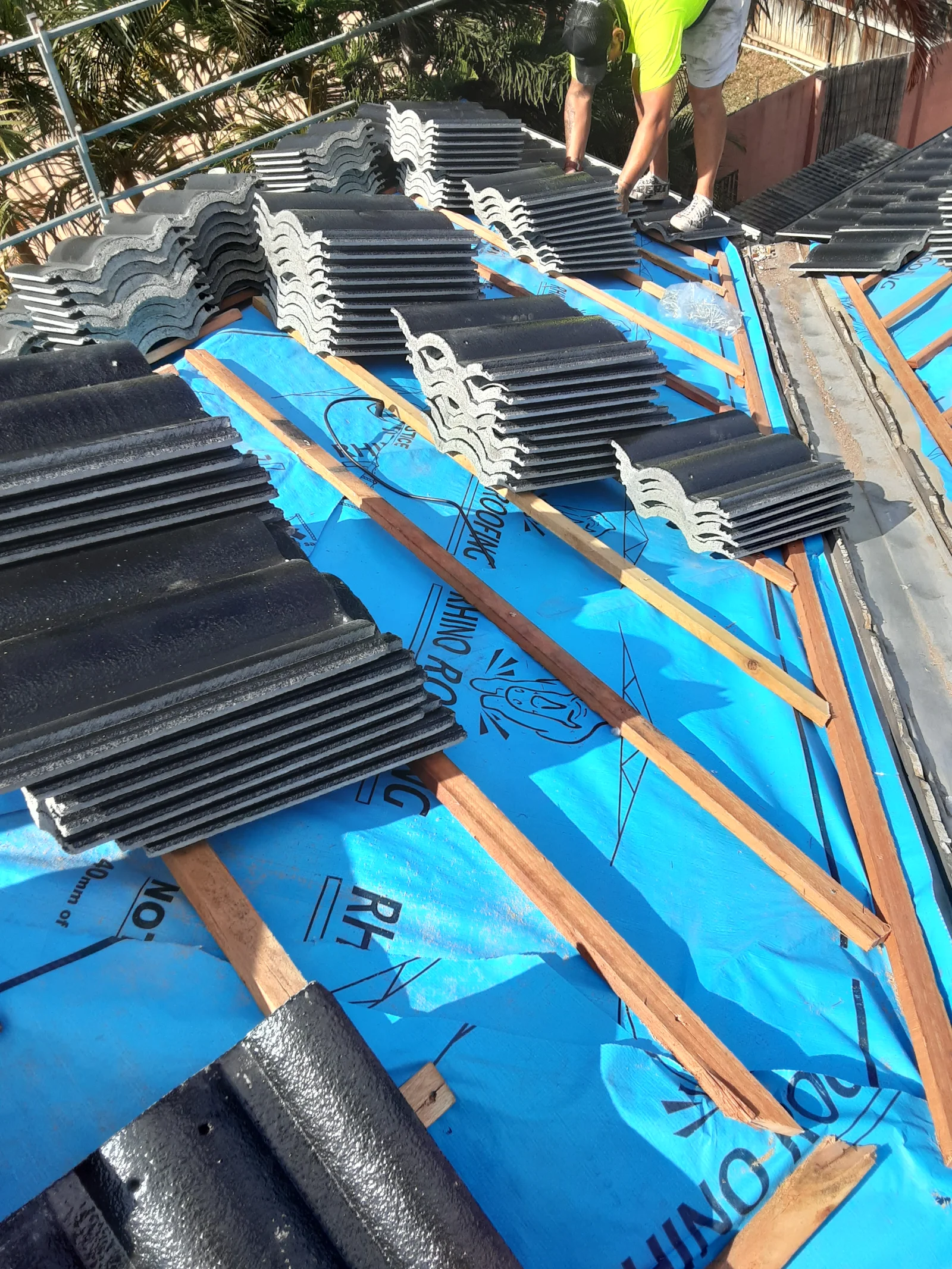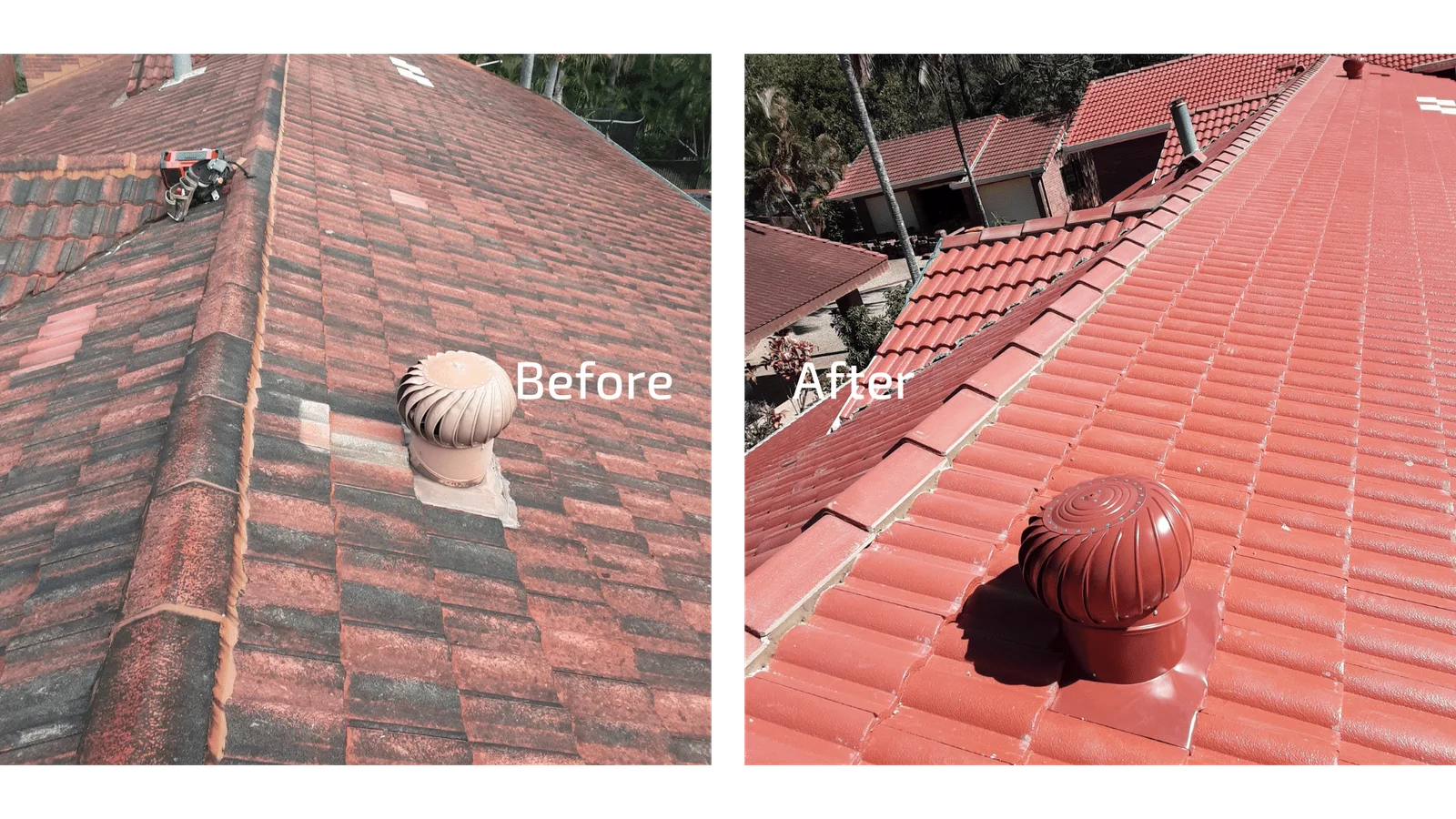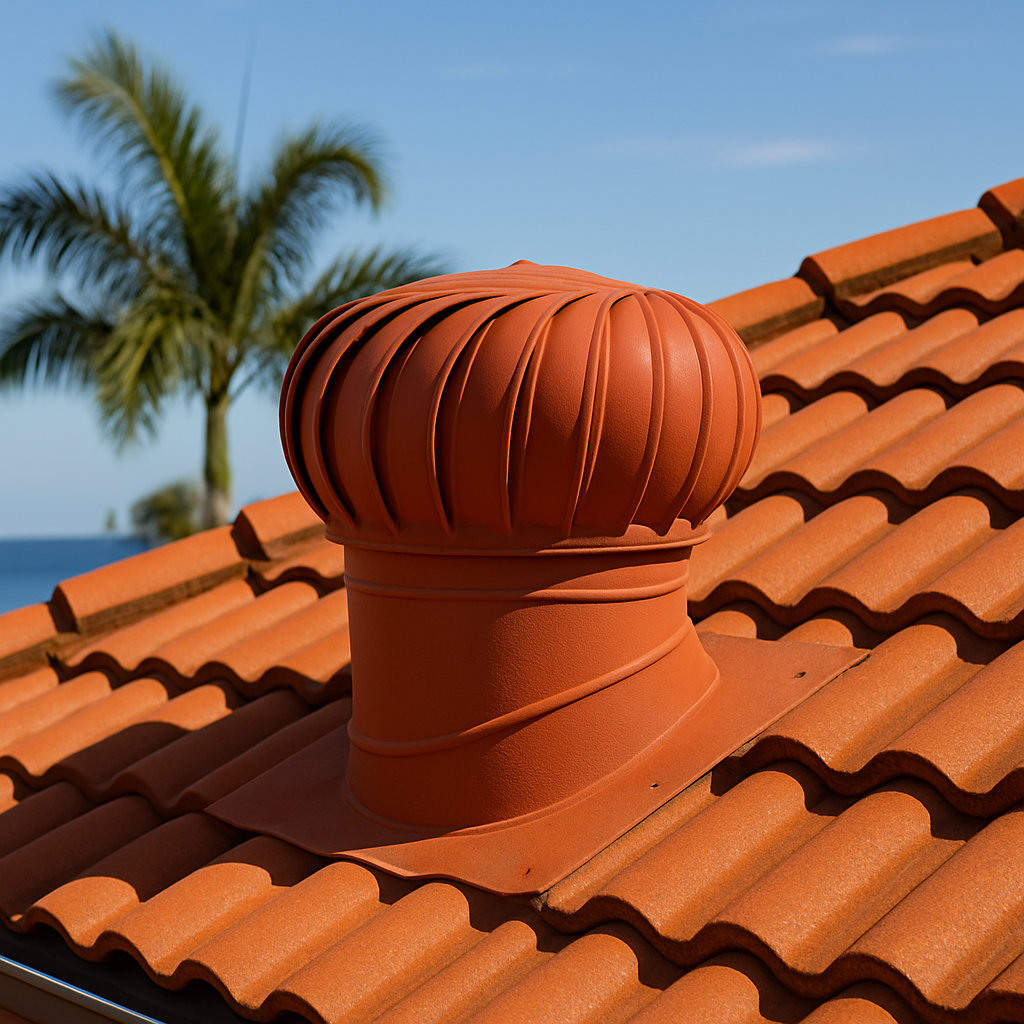You know how it is – you’ve been planning that tile roof restoration project for ages. The whole thing is finally lined up – scaffolding ordered, tiles purchased, tradespeople booked. But then the weather intervenes! A stretch of heavy rain, high winds or baking hot sun can really throw your carefully made plans into disarray. In this article, we’ll take you through how different weather conditions impact tile roof restoration work. From scheduling around rainfall to managing high temperatures, we’ve got you covered on working with the elements to complete your project successfully no matter what the weather throws at you!
How Weather Conditions Impact Tile Roof Restoration
The weather plays a huge role in how well your tile roof restoration project goes. Strong winds, heavy rain, and temperature changes can all cause damage or complications.
High winds are one of the biggest concerns. Powerful gusts can cause tiles to shift, break, or become loose. This creates gaps in your roof that allow water to seep in. Loose or broken tiles may even fall off completely, leaving holes behind. During windy weather, roofers have to take extra precautions to ensure tiles are securely fastened as work progresses.
Heavy or prolonged rain also impacts tile roof restorations. While a little rain typically won’t halt work, downpours can make tiles slippery and difficult to walk on. Excessive rain may also damage tiles by causing them to crack or warp. In some cases, rain can get into open areas of the roof before repairs are complete. Roofers try to seal up and cover any exposed parts of the roof each day to prevent this.
Changes in temperature that cause expansion and contraction are problematic too. As tiles heat up during the day and cool down at night, they expand and contract slightly. Over time, this process can lead to cracks forming in tiles and sealants. Temperature fluctuations during restoration work may also cause tiles and sealants to shift, disrupting repairs. Roofers aim to use materials that can withstand some degree of temperature-related movement, but extreme changes still present challenges.
As you can see, weather conditions significantly impact tile roof restorations. By understanding these effects, you can better plan your project and know what to expect. An experienced roofer will also take proper precautions to minimise weather-related issues. With the right timing and techniques, you can achieve a successful restoration, despite what the weather may throw your way!
Planning Your Brisbane or Gold Coast Roof Restoration Project Around the Weather
When it comes to restoring your tile roof in Brisbane or on the Gold Coast, the weather plays a major role in how your project will progress. With year-round exposure to sunlight, rain, wind and pollution, roofs in these areas face damage that requires restoration to prevent leaks or replacement.
As a homeowner, it’s important to understand how different weather conditions can affect your roof restoration to properly plan the timeline and costs. Hot, dry weather is ideal for cleaning, repairs and painting as it allows for proper drying and adhesion. However, torrential rains require allowing extra days in case of delays. It may also require taking extra precautions to protect any work already completed.
- High winds can prevent painters from working at heights and may blow away protective sheeting or drop cloths, delaying the project. It’s best to avoid scheduling restoration work during the windy season if possible.
- Extreme heat can cause paint or sealants to dry too quickly, preventing proper adhesion or coverage. It may require starting earlier in the day or using special heat-resistant products.
- Pollution and humidity may require more intensive cleaning or priming to provide a proper base for any restorative work. Additional coats of paint or sealant may also be needed for the best protection.
By understanding how weather impacts your roof and restoration process, you can better plan the timeline, costs and products needed for a successful project. Scheduling work during the dry season and avoiding extremes when possible will help ensure your roof is restored to a like-new condition for years of protection from the elements. After 30 years of experience restoring Brisbane and Gold Coast roofs, our team at Storm Call Roofing Projects Pty Ltd has seen it all and knows exactly how to handle any weather for a quality result.
Protecting Your Roof During Restoration in Rainy or Stormy Weather
When the weather isn’t cooperating, protecting your roof during restoration is crucial. No one wants leaks or water damage, especially after investing in repairs or replacement tiles. Plan ahead for storms and heavy rain so you’re not caught off guard.
Patch any cracks or holes immediately.
Any openings in the roof surface provide an easy way for water to seep in. Seal or patch them as soon as possible, then schedule full repairs when the weather clears up. It’s a temporary solution, but will prevent further damage in the meantime.
Secure loose or sliding tiles.
If you notice tiles that have shifted or become loose, secure them in place with roof cement or a similar sealant. Loose tiles are easily blown off or damaged in high winds and rain, leaving your roof vulnerable. Apply sealant around the edges of tiles to create a waterproof barrier.
Install weatherproof tarps or covers.
For larger repairs or full restoration projects, covering the roof with heavy-duty, waterproof tarps or roof covers provides the best protection. Secure the edges and seams of the covers to ensure maximum coverage and prevent lifting in windy conditions. The covers shield your roof from rain and debris until work can resume.
Reschedule work if necessary.
Don’t attempt repairs or restoration if dangerous weather is approaching or conditions become unsafe. It’s not worth the risk of injury or additional damage. Contact your contractor and reschedule the work for a later date when the forecast shows more favourable weather. Your roof and wallet will thank you.
Overall, keeping a close eye on the local weather forecast and taking appropriate precautions can help safeguard your roof during restoration, even when Mother Nature throws some storms your way. Protecting your investment in repairs or replacement tiles will give you greater peace of mind.
Managing Hot Weather During Your Tile Roof Restoration
The hot Australian summer sun can take a serious toll on your tile roof. Extreme heat causes tiles to expand, which can lead to cracks and damage. It also speeds up weathering and fading of the tiles. When restoring or repairing a tile roof in hot weather, there are a few things you’ll want to keep in mind.
To start, schedule work during the coolest parts of the day, like early morning or evening. Avoid midday when temperatures are highest. Working in full sun during peak heat can be dangerous for workers and damage new or repaired tiles. It’s best to avoid tile roof restoration work altogether on severely hot days over 35°C.
Use light-coloured tiles and roof coatings. Lighter tiles and coatings reflect more of the sun’s rays, keeping the roof surface cooler. Dark tiles absorb more heat and can reach extreme temperatures, which causes damage and fades the tiles faster. A lighter-coloured tile roof will last longer in hot weather.
Apply a roof coating or sealcoat. A coating protects tiles from damage and weathering caused by heat and UV exposure. It also helps reflect sunlight to keep the roof cooler. Re-apply roof coatings every few years to maintain protection.
Ventilate the attic space. An attic fan or vents can help hot air escape from the attic, lowering temperatures on the underside of the roof. This prevents overheating damage to tiles and the roof structure. Proper attic ventilation makes a big difference in hot weather.
Take extra precautions when working on a hot tile roof like drinking plenty of water, wearing light and breathable clothing, starting early, and taking frequent breaks. Carefully monitor new or repaired tiles in hot weather to ensure no damage occurs as the roof temperature changes. With the right restoration techniques and safety measures, you can complete a tile roof project even during the hottest summer days.
FAQs About Weather and Roof Restorations
The weather plays an important role in any roof restoration project. Severe weather events like torrential rain, hailstones, and high winds can damage your roof tiles or gutters, requiring repairs or replacement. It’s a good idea to inspect your roof regularly after storms to check for any harm caused by extreme weather.
How soon after a storm should I have my roof inspected?
As soon as possible. Storms can loosen or dislodge roof tiles, damage gutters and downpipes, or expose weaknesses in the roof structure. Have a professional roofing contractor conduct a thorough inspection within a week of any major storm. They can spot issues early and suggest necessary repairs to prevent further damage or leaks.
Do certain weather conditions affect the restoration process?
Yes, weather impacts the materials, equipment, and workability for roof restorations. For example:
- Hot weather can damage sealants, adhesives and paint before they fully cure. Roofers may start work earlier and end earlier to avoid the hottest parts of the day.
- Cold, wet weather slows the curing of sealants and adhesives and can damage some roof materials. Roof restorations may be delayed until the temperature increases and the roof surface is dry.
- Windy conditions make it difficult and unsafe to haul equipment and materials up to the roof and can blow away loose debris. Roofers will avoid working in high winds and secure all equipment and materials.
How long does it take for a roof restoration after severe weather damage?
The time required depends on the extent of the damage. Minor repairs for a few broken or slipped tiles may only take a day. Replacing entire sections of damaged roofing or gutters could take a week or more. Your roofing contractor will inspect the damage, provide an estimate of the work and time required, and schedule the restoration once weather conditions allow and materials/crews are available. The key is to act quickly after a storm to prevent further damage to your roof.
Conclusion
So there you have it. Weather can really play havoc with your tile roof restoration project if you don’t plan for it. But with some foresight about typical conditions in your area, and a bit of flexibility in your timeline, you can work around whatever the skies decide to throw at you. The key is staying on top of the forecast so you can adjust when needed. Don’t be afraid to pause work temporarily if the weather takes a turn. It’s better than trying to power through and causing damage or safety issues. Take your time and do it right. Your beautiful restored tile roof will be well worth the wait, rain or shine.





